I’ve been a personal trainer for over three decades. As a result, I’ve tried just about every muscle and strength-building workout method you can think of. From drop sets to supersets to super slow to pyramids and many, many more, I’ve done them all.
Some of these methods have proven to be game-changers and become staples of my workouts. Others have been less effective, so I quickly dropped them.
However, I’m always looking for new training methods to use, and I consider myself to be something of a self-experimenter. After all, I’d never prescribe to a client or write about something I hadn’t tried for myself.
One of the latest training trends to come onto my radar is long-length partial reps. This method promises to enhance hypertrophy gains, making it ideal for bodybuilders. This isn’t just hyperbole, either. There are numerous studies supporting the use of this training method (1).
In this article, I discuss how and why to use this training method and provide you with a long-length partial reps workout to try.
What Are Long-Length Partial Reps?
Most training experts recommend you work out using the fullest, safest range of motion you can muster. For example, when bench pressing, start with your arms straight, lower the bar to your chest, and then press it back up to lock out. Similarly, when doing squats, you start with your knees and hips extended, descend as deep as you can, and then stand back up.
Level Up Your Fitness: Join our 💪 strong community in Fitness Volt Newsletter. Get daily inspiration, expert-backed workouts, nutrition tips, the latest in strength sports, and the support you need to reach your goals. Subscribe for free!
Numerous studies support full vs. partial range of motion (2), and you can read more about this topic here. Consequently, anything less than a full range of motion, or ROM for short, is often described as cheating or labeled as unproductive.
However, mounting anecdotal and imperial evidence suggests partial reps may enhance muscle growth (3).
And we’re not talking partial reps when your muscles are shortened, such as the top of a biceps curl or calf raise. Bodybuilders call these “burn reps,” as they’re a great way to “burn out” your muscles at the end of a set.
Rather, the type of partial rep gaining so much traction in studies and on social media is long-length partials.
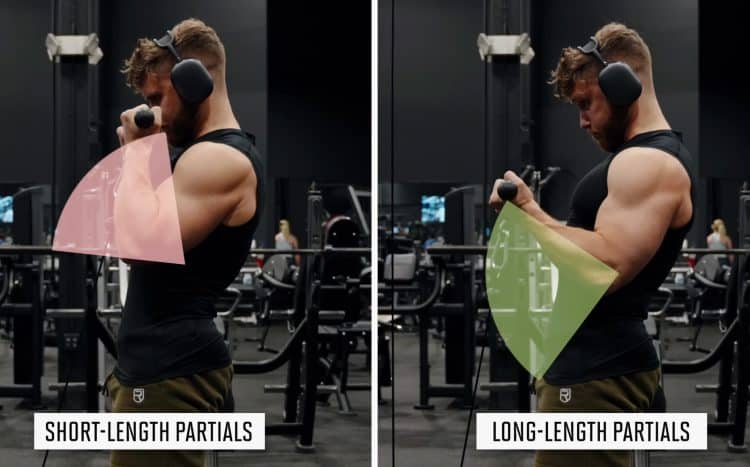
Long-length partial reps, known also as lengthened partials, start with your muscles in a stretched or elongated position and involve only 50% of the usual range of motion. Reps are then performed close or to muscular failure.
Because of the conflicting evidence, it’s impossible to say whether long-length partial reps are the key to maximizing muscle hypertrophy. That said, a growing number of well-known bodybuilders are reporting gains after using this method. Therefore, it could be worth incorporating into your workouts.
How to Use Long-Length Partial Reps
Partial reps may give you an edge in your quest to build bigger, thicker muscles. However, you’ll get better results if you use them in a logical and progressive manner. Here are four ways to use this training method in your workouts.
1. Your primary training method
I don’t recommend an all-or-nothing approach to long-length partial reps. However, it’s an effective way to learn how to use this method. Simply switch your full range of motion exercises for lengthened partials. For example:
- Leg extensions from knees bent to halfway up
- Hamstring curls from knees straight to halfway up
- Leg presses from the bottom position to halfway up
- Dumbbell bench presses from the bottom position to halfway up
- Pec flyes from arms extended to halfway up
- Lat pulldowns from arms straight to halfway up
- Seated rows from arms extended to halfway in
- Shoulder presses from the bottom position to halfway up
- Lateral raises from the bottom position to halfway up
- Preacher curls from arms extended to halfway up
- Triceps pushdowns from the arms bent position to halfway down
You can apply long-length partials to most exercises, but some work better than others. For example, barbell bench presses are a bad choice, as you could get trapped under the barbell. However, you could do them with a Smith machine or in a power rack with the weight catchers set at an appropriate height.
2. To train past failure
This is arguably the most straightforward and effective way to incorporate long-length partials into your workouts. With this method, you just add some long-length partials to the end of your usual set.
For example, do a set of pull-ups to failure. Then, when you can no longer pull your chin up to the bar, pump out a few partial reps from a dead hang up to halfway up. Complete 3-5 partials, or until you reach failure again.
While this method works well for pulling exercises, it’s not a good choice for big pushing exercises, such as squats or bench presses. However, it does work well for chest and leg isolation exercises, e.g., dumbbell flyes, cable crossovers, leg extensions, and leg curls.
You can do lengthen partials at the end of every set, or just your final set. However, doing them after every set may be too fatiguing and could reduce overall training volume, making your workouts less effective.
Read also: When, Why, And How to Train to Failure
3. As a finisher
Another great way to use long-length partial reps is as a finisher. Do your regular 3-5 sets of an exercise, using a full range of motion. Then, after a brief rest, do a final set of long-length partials to fully exhaust the target muscle. This is an excellent way to ensure that you don’t leave any gains on the table, and fatigue as many muscle fibers as possible.
For example, do 3- 5 sets of leg extensions using a full ROM. Then, to completely fry your quads, do a final finisher set of long-length partials. Start with your knees bent and extend your legs only halfway up.
4. Integrated long-length partial reps
This training method is also known as 1 ½ reps. In simple terms, it combines full-range reps with lengthened partials to deliver the best of both types of training. This is a great option for exercisers who want to increase hypertrophy while maintaining functional mobility.
To use this method, break your chosen exercise into two parts – the full range of motion and a long-length partial. Do one complete rep followed by a half rep. Continue in this fashion until you hit failure.
For example, for squats, descend as normal and then rise halfway up. Return to a deep squat, and then stand all the way up. That’s one (or 1 ½) rep – keep going!
You can apply this method to almost any exercise you can think of. However, take care during squats and bench presses or any exercise where you could hit failure and get pinned under a heavy barbell. Make sure you have an “escape plan” in case you run into difficulties. You’ll also need to use less weight or do fewer reps compared to regular straight sets.
How Do Long-Length Partial Reps Work?
While several studies support the value of lengthened partials, there is currently no research to explain the exact mechanisms (4) by which they work. In fact, the landmark studies into what is usually called “stretch-mediated hypertrophy” were conducted on animals rather than humans (5).
However, given my three decades of training and coaching experience, I’ve got some ideas about why long-length partials may boost hypertrophy.
1. Train closer to failure
Studies indicate that the most crucial trigger for building muscle is training close to failure. While submaximal efforts can result in modest muscle gains, you’ll build muscle faster if you take your sets to within 1-3 reps of failure (6).
Lengthened partials allow you to push closer to failure by eliminating the weakest part of the movement. For example, just because you cannot lock out your arms during chest presses does not mean your pecs have hit failure. Instead, it’s your triceps that are exhausted.
Doing partial reps in the stretched position means you can push your pecs closer to real failure. Lengthened partials result in more stimulating reps per set, which should produce superior muscle growth.
Level Up Your Fitness: Join our 💪 strong community in Fitness Volt Newsletter. Get daily inspiration, expert-backed workouts, nutrition tips, the latest in strength sports, and the support you need to reach your goals. Subscribe for free!
2. Increased metabolic stress
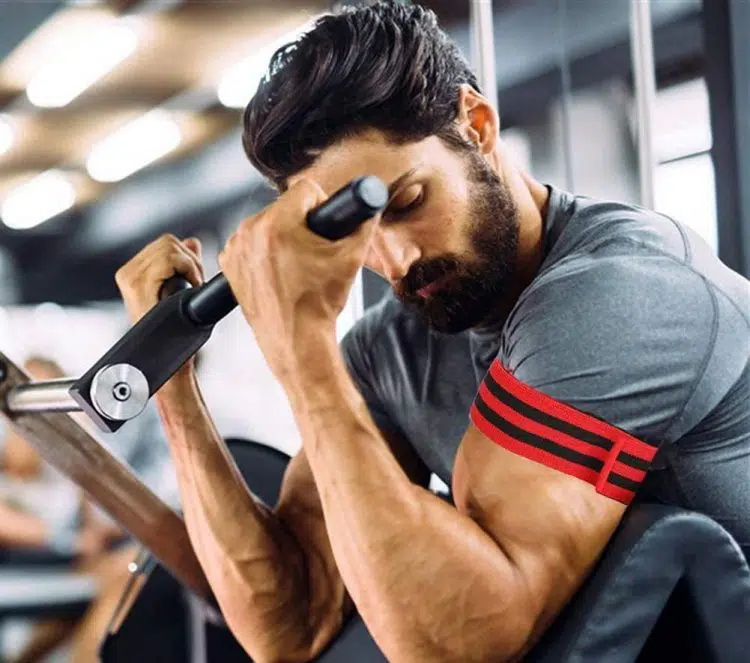
Stretched partial reps reduce blood flow into your muscles. In essence, they work a lot like blood flow restriction (BFR), also known as occlusion training. Limiting the blood flow into a muscle increases metabolic stress, which is another driver of muscle growth.
Lengthened partials cause blood to “back up” outside the muscles you are training. Then, when your set ends, that build-up of blood floods your muscles, causing a massive pump. Bodybuilders have long associated the pump with muscle growth.
Read more about the pump and how it may increase hypertrophy here.
The pump is thought to drive anabolic substances into the muscles and stretches the muscle fascia from within, allowing more space for growth. It also feels very satisfying, making your muscles temporarily bigger. Getting a good pump may also lead to sarcoplasmic hypertrophy, which is an increase in the size of non-contractile proteins (8).
3. Increased muscle microtrauma
Training your muscles in a stretched position exposes them to a lot of mechanical tension or stress. This stress causes microscopic tears in the muscle fibers, which we call microtrauma. Microtrauma is another trigger for hypertrophy.
Your body uses amino acids to repair this damage. However, it goes one step further by building new muscle fibers, so your muscles grow bigger and stronger than before, protecting them from further workouts. So, in theory, more muscle microtrauma will result in increased muscle growth.
4. Novel training stimulus
As I often say to my personal training clients, “If you always do what you have always done, you’ll always get what you have always got.” I use this expression to explain why we need to change their exercises and routines from time to time. Do the same thing too often, and a training rut is inevitable.
Long-length partials are a novel training stimulus that challenges your muscles in a unique way. If you’ve been doing the same exercises and workouts for more than a couple of months, doing something so dramatically different should reignite your progress.
Long-Length Partial Reps – Mistakes to Avoid
You should now have a good idea of how to integrate long-length partials into your workouts. However, avoid these common mistakes to ensure you get the most from this non-conventional training method.
Turning lengthened partials into cheat reps – the only obvious difference between your regular reps and your partials should be the range of motion. You still need to control the weight and avoid using momentum to lift it. So, no swinging, swaying, jerking, or bouncing. Repeat after me: Long-length partial reps are not cheat reps!
Hyperextending/hyper-flexing your joints – pulling exercises could lead to overextended joints, e.g., during biceps or leg curls. In contrast, deep squats and leg presses could lead to hyper-flexed joints. Take care not to exceed your natural range of motion, as doing so could cause severe injury.
Inadvertently reverting to full ROM – long-length partial reps are hard and tiring. Not fully extending your limbs means your muscles will burn and shake. Extending your ROM will provide some relief, but then your workout will be less effective. Make sure your ROM is no more than 50% of your normal rep.
Using partials all the time – while long-length partials may enhance hypertrophy, it would be a mistake to use them all the time. Full ROM training also offers many benefits, which you may lose if you shorten all your reps. Combine short and full-ROM training so you enjoy all the effects on offer.
Long-Length Partial Reps Sample Workouts
Armed with all the information in this article, you have everything you need to create your own partial-rep workouts. However, to save you the time and effort, I’ve written one for you.
But, before you start, make sure you prepare your muscles with an appropriate warm-up. Begin with 5-10 minutes of light cardio, followed by dynamic mobility and flexibility exercises for the joints and muscles you’re about to use. End your warm-up with a couple of sets of the main exercises you are about to perform.
Warmed up and ready to go? Then let’s get to work!
Workout 1 – Chest and Back
| Exercise | Sets | Reps | Recovery | ROM | |
| 1 | Bench press | 4 | 6-8 | 2 minutes | Int. partials |
| 2 | Pull-up | 4 | 6-8 | 2 minutes | Int. partials |
| 3 | Dip | 3 | 10-12 | 90 seconds | LLP finisher |
| 4 | Seated row | 3 | 10-12 | 90 seconds | LLP finisher |
| 5 | Inc. DB press | 3 | 15-20 | 60 seconds | Int. partials |
| 6 | Lat pulldown | 3 | 15-20 | 60 seconds | Int. partials |
| 7 | Straight arm pulldown | 2 | 8-12 | 60 seconds | LLP only |
- Int. partials = 1 ½ reps. One full rep alternated with one long-length partial rep.
- LLP finisher = full reps to failure followed by partial reps to failure.
- LLP only = long-length partial reps for the entire set. No full ROM reps.
Workout 2 – Legs
| Exercise | Sets | Reps | Recovery | ROM | |
| 1 | Goblet squat | 4 | 6-8 | 2 minutes | Int. partials |
| 2 | Romanian deadlift | 4 | 6-8 | 2 minutes | Int. partials |
| 3 | Leg press | 3 | 10-12 | 90 seconds | LLP finisher |
| 4 | Hip thrust | 3 | 10-12 | 90 seconds | LLP finisher |
| 5 | Leg extensions | 3 | 15-20 | 60 seconds | Int. partials |
| 6 | Leg curls | 3 | 15-20 | 60 seconds | Int. partials |
| 7 | Bulgarian split squat | 2 | 8-12 | 60 seconds | LLP only |
| 8 | Standing calf raise | 4 | 8-12 | 60 seconds | LLP only |
- Int. partials = 1 ½ reps. One full rep alternative with one long-length partial rep.
- LLP finisher = full reps to failure followed by partial reps to failure.
- LLP only = long-length partial reps for the entire set. No full ROM reps.
Workout 3 – Shoulders and Arms
| Exercise | Sets | Reps | Recovery | ROM | |
| 1 | Military press | 4 | 6-8 | 2 minutes | Int. partials |
| 2 | Lateral raise | 3 | 10-12 | 90 seconds | LLP finisher |
| 3 | Reverse fly | 3 | 10-12 | 90 seconds | LLP finisher |
| 4 | Barbell curl | 3 | 6-8 | 2 minutes | Int. partials |
| 5 | Skull crusher | 3 | 6-8 | 2 minutes | Int. partials |
| 6 | Cable curl | 3 | 15-20 | 60 seconds | LLP only |
| 7 | Cable pushdown | 3 | 15-20 | 60 seconds | LLP only |
- Int. partials = 1 ½ reps. One full rep alternative with one long-length partial rep.
- LLP finisher = full reps to failure followed by partial reps to failure.
- LLP only = long-length partial reps for the entire set. No full ROM reps.
Long-Length Partial Reps – FAQs
Do you have a question about long-length partials? No problem, because here are the answers! Need more information? Drop me a line in the comments section below, and I’ll get back to you ASAP.
1. Are long-length partial reps safe?
Lengthened partials should be no more dangerous than any other training system. Providing you avoid bouncing the weight and don’t over-flex or hyperextend your joints, it ought to be safe.
That said, it is a way to make your workouts more intense, and, as such, lengthened partials put more stress and tension on your muscles. This means you must warm up thoroughly before this type of training, or you risk tearing a muscle.
2. Are long-length partials suitable for beginners?
Long-length partials are an advanced training method. Not only should beginners not use them, but they shouldn’t need them, as basic methods should still be effective. Beginners should focus on using a full range of motion and mastering proper exercise form. Save the partial reps for when progress starts to stall.
3. Can you use long-length partials for calisthenics?
I do a lot of calisthenics. In fact, it’s one of my favorite ways to work out. I have found that long-length partials work very well with many bodyweight exercises. A few of my favorite movements include:
- Deficit push-ups
- Ring push-ups
- Dips
- Pull-ups
- Chin-ups
- Ring rows
- Deficit Bulgarian split squats
- Air squats
I’m sure you can use long-length partials with many other exercises, too. I tend to use them as finishers, doing 1-2 sets of lengthened partials after my full ROM sets. However, integrated partials (1½ reps) are also effective and work well with calisthenics.
4. How often should I use long-length partials?
There are no hard and fast rules regarding how often you can use long-length partials. It very much depends on how you incorporate them into your training program and how well you rest and recover.
My advice is to start by using them infrequently, e.g., 1-2 times a week, and increase as you assess their effectiveness and your ability to recover. Also, remember, it’s not a good idea to use partial reps exclusively, as you’ll miss out on many of the benefits of full ROM training.
So, to summarize, introduce long-length partials gradually and only do more if you feel you are recovering fully between workouts.
5. Are there any exercises that are not suitable for long-length partials?
In theory, you can use long-length partials with any strength training exercise. However, I don’t recommend barbell squats and bench presses, where there is a risk of getting pinned under a heavy barbell.
Therefore, If you do choose to try these exercises, make sure you either have an experienced spotter on hand or do them in a power rack with the safety bars in place. Better yet, use a Smith machine.
Long-Length Partial Reps – Closing Thoughts
Many exercisers are looking for the secret method that will allow them to pack on muscle size the fastest. And while long-length partials are a potent training tool, they are not the holy grail of muscle building. There are other things that are much more important, such as consistency, progressive overload, diet, and sleep.
Without these foundations, lengthened partials won’t do zip for your gains. Think of long-length partials as the icing on the cake, not a replacement for the cake itself!
So, in conclusion, by all means, give long-length partials a shot. My clients and I have found them to be effective, challenging, and fun. But, never lose sight of what really works – hard, heavy, consistent workouts. Sadly, there are no safe shortcuts to getting big and strong.
References:
- Pedrosa GF, Lima FV, Schoenfeld BJ, Lacerda LT, Simões MG, Pereira MR, Diniz RCR, Chagas MH. Partial range of motion training elicits favorable improvements in muscular adaptations when carried out at long muscle lengths. Eur J Sport Sci. 2022 Aug;22(8):1250-1260. doi: 10.1080/17461391.2021.1927199. Epub 2021 May 23. PMID: 33977835.
- McMahon GE, Morse CI, Burden A, Winwood K, Onambélé GL. Impact of range of motion during ecologically valid resistance training protocols on muscle size, subcutaneous fat, and strength. J Strength Cond Res. 2014 Jan;28(1):245-55. doi: 10.1519/JSC.0b013e318297143a. PMID: 23629583.
- Kassiano W, Costa B, Kunevaliki G, Soares D, Zacarias G, Manske I, Takaki Y, Ruggiero MF, Stavinski N, Francsuel J, Tricoli I, Carneiro MAS, Cyrino ES. Greater Gastrocnemius Muscle Hypertrophy After Partial Range of Motion Training Performed at Long Muscle Lengths. J Strength Cond Res. 2023 Sep 1;37(9):1746-1753. doi: 10.1519/JSC.0000000000004460. Epub 2023 Apr 3. PMID: 37015016.
- Warneke K, Lohmann LH, Lima CD, Hollander K, Konrad A, Zech A, Nakamura M, Wirth K, Keiner M, Behm DG. Physiology of Stretch-Mediated Hypertrophy and Strength Increases: A Narrative Review. Sports Med. 2023 Nov;53(11):2055-2075. doi: 10.1007/s40279-023-01898-x. Epub 2023 Aug 9. PMID: 37556026; PMCID: PMC10587333.
- Antonio J, Gonyea WJ. Progressive stretch overload of skeletal muscle results in hypertrophy before hyperplasia. J Appl Physiol (1985). 1993 Sep;75(3):1263-71. doi: 10.1152/jappl.1993.75.3.1263. PMID: 8226539.
- Grgic J, Schoenfeld BJ, Orazem J, Sabol F. Effects of resistance training performed to repetition failure or non-failure on muscular strength and hypertrophy: A systematic review and meta-analysis. J Sport Health Sci. 2022 Mar;11(2):202-211. doi: 10.1016/j.jshs.2021.01.007. Epub 2021 Jan 23. PMID: 33497853; PMCID: PMC9068575.
- Schoenfeld, Brad J. PhD, CSCS, CSPS, NSCA-CPT1; Contreras, Bret MA2. The Muscle Pump: Potential Mechanisms and Applications for Enhancing Hypertrophic Adaptations. Strength and Conditioning Journal 36(3):p 21-25, June 2014. | DOI: 10.1097/SSC.0000000000000021
- Roberts MD, Haun CT, Vann CG, Osburn SC, Young KC. Sarcoplasmic Hypertrophy in Skeletal Muscle: A Scientific “Unicorn” or Resistance Training Adaptation? Front Physiol. 2020 Jul 14;11:816. doi: 10.3389/fphys.2020.00816. PMID: 32760293; PMCID: PMC7372125.

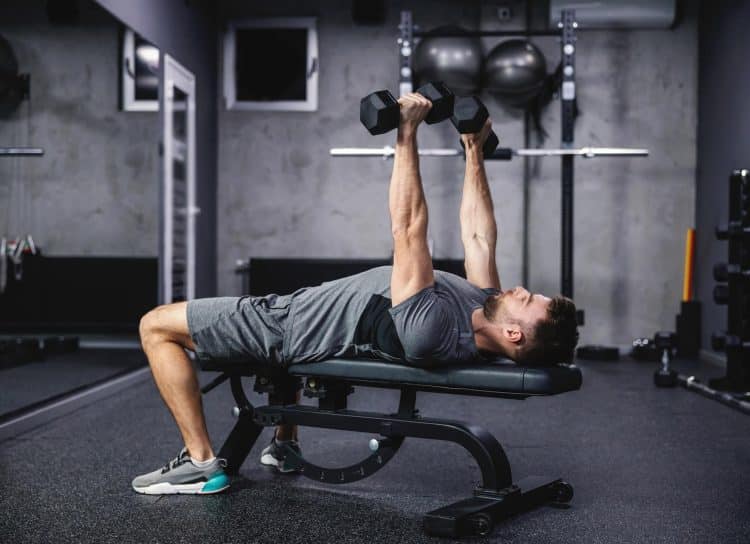
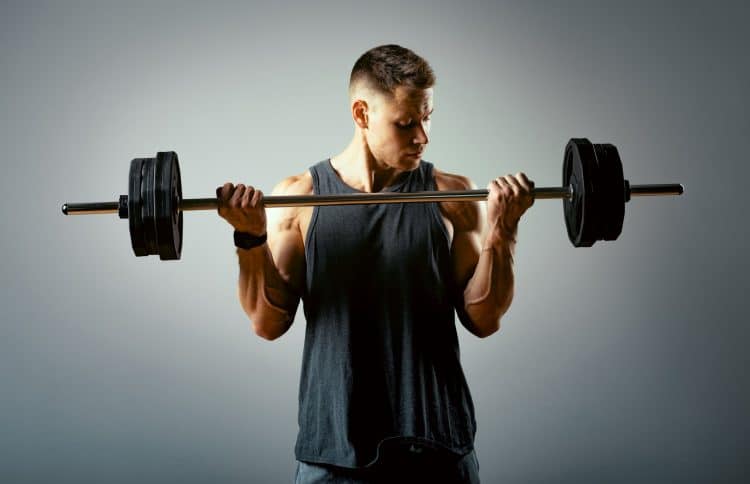


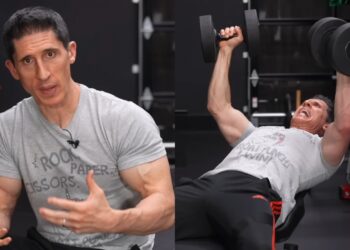

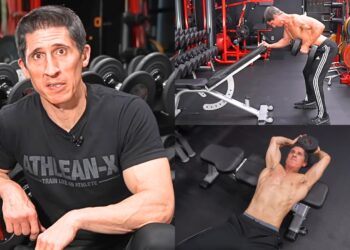



Great explanation related to the long length partial reps. Can i please know about the rep range related to the compound exercises and isolataion exrrcises that can be apply to long lenhth partials in order to get massive results related to the muscle hylertrophy?
Hi Ravi,
Thanks for your kind words!
The rep range doesn’t matter all that much. So long as you take your sets to failure you’ll trigger muscle growth – both for isolation and compound movements. That said, 6-15 is probably a good range for most exercises, with lower reps better for compounds and higher for isolation. I recommend you experiment to find out what works/feels best for you.
Good luck with your training.